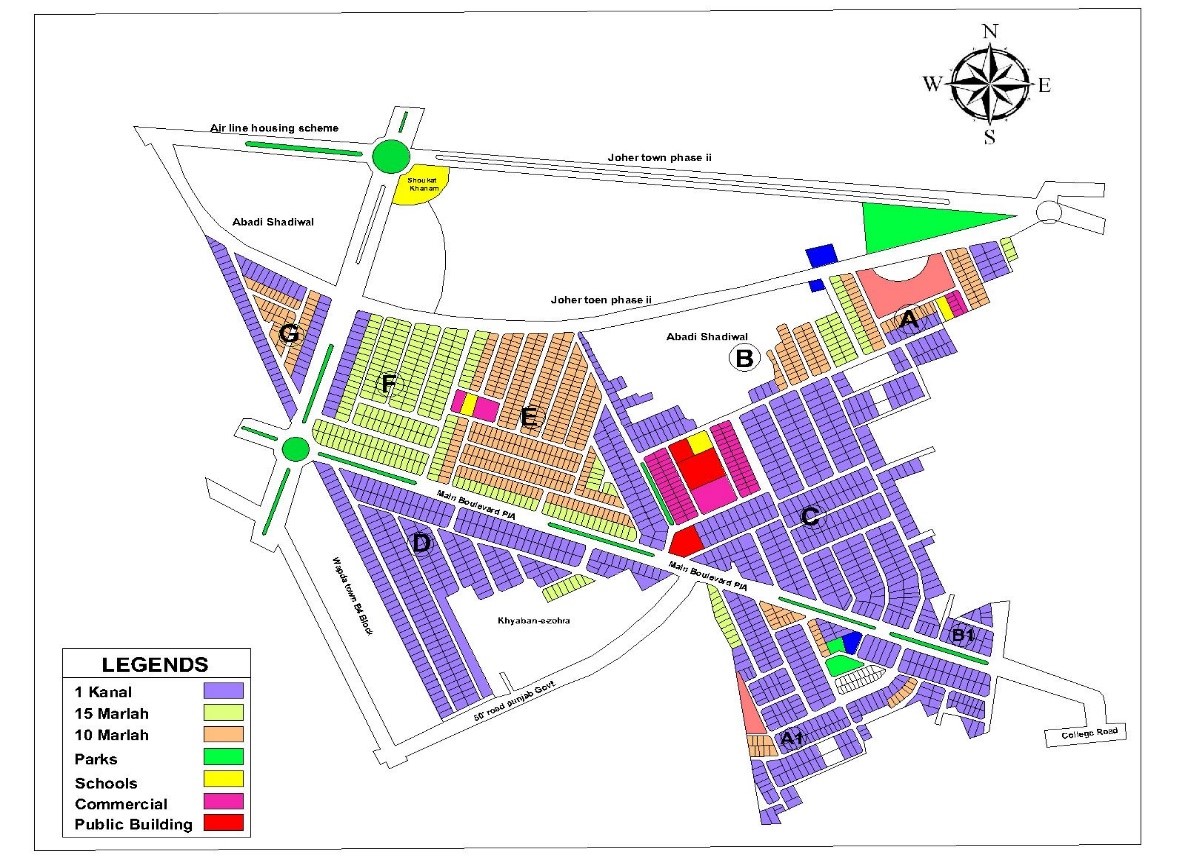Impact Assessment of Commercialization of Main Roads in Planned Housing Schemes: A Case Study of PIA Housing Scheme
Keywords:
Commercialization;Impact Assessment; Land Use Conversion; People’s Perception; Residential NeighborhoodsAbstract
The phenomenon of commercialization of residential properties is taking place rapidly. Although conversion of landuse from residential to commercial in built-up areas is not new in developing countries but planned housing schemes also start experiencing this land-use conversion, and now are no more predominantly residential. Furthermore, declaring a road commercial by the competent authorities, even without taking necessary improvements in infrastructure and consent of the community, further exaggerate the problem. The negative consequences of this phenomenon have a severe effects on residential areas and include environmental problems, traffic congestion, noise, and air pollution, and affect the residential character of the area in negative manner for which they were initially developed. The aim of the study is to describe briefly about remits of commercialization polices in Lahore and then to assess the functionality of commercialized residential roads through assessment criteria based upon the indicators established to assess capacity of road infrastructure before declaring it commercial. This includes road management plan, details of road network with condition of road, its width, Pedestrian and Public transport facilities, structure, including the primary, mixed-use, and secondary nodes. Perception of the users and residents regarding the change in the use of land is also weighed up. The findings of this research will draw the attention of responsible authorities to improve the design guidelines, which are essential to consider before commercializing the residential roads.
References
K. C. Seto, M. Fragkias, B. Güneralp, and M. K. Reilly, “A Meta-Analysis of Global Urban Land Expansion,” PLoS One, vol. 6, no. 8, p. e23777, 2011, doi: 10.1371/JOURNAL.PONE.0023777.
I. A. A. Aziz , S. M. Mayo, “Master Planning Under Legislative and Organizational Impediments (A case study of Lahore,” Tech. J., vol. 19, no. 4, pp. 34–42, 2014, doi: http://tj.uettaxila.edu.pk/older-issues/2014/No4/6-Master%20Planning%20Under%20Legislative%20and%20Organizational%20Impediments.pdf.
NESPAK, “Integrated Master Plan for Lahore-2021 Vol I,II.” 2004.
A. U. Z. Malik, A. S. A. Pasha, and D. S. S.-H. Zaidi, “Spatial Prospects of Commercialization of Samanabad, Lahore,” J. Art, Archit. Built Environ., vol. 1, no. 1, pp. 24–51, May 2018, doi: 10.32350/JAABE/11/02.
“Haphazard commercialization: a potential threat to sustainabl..|INIS.” https://inis.iaea.org/search/search.aspx?orig_q=RN:36106533 (accessed Jun. 23, 2022).
“LDA_LAND_USE_RULES_2014.pdf.” .
Lahore Development Authority. (1984). Building Regulations. Lahore: Lahore Development Authority.
Lahore Development Authority. (1997). Building Regulations. Lahore: Lahore Development Authority.
Lahore Development Authority. (2002). Building Regulations. Lahore: Lahore Development Authority.
Lahore Development Authority. (2007). Building Regulations. Lahore: Lahore Development Authority.
Local Government and Rural Development Department, Government of the Punjab. (2004). The Punjab Local Government (Commercialization) Rules-2004. Lahore.

Published
How to Cite
Issue
Section
License
Copyright (c) 2022 50sea

This work is licensed under a Creative Commons Attribution 4.0 International License.




















